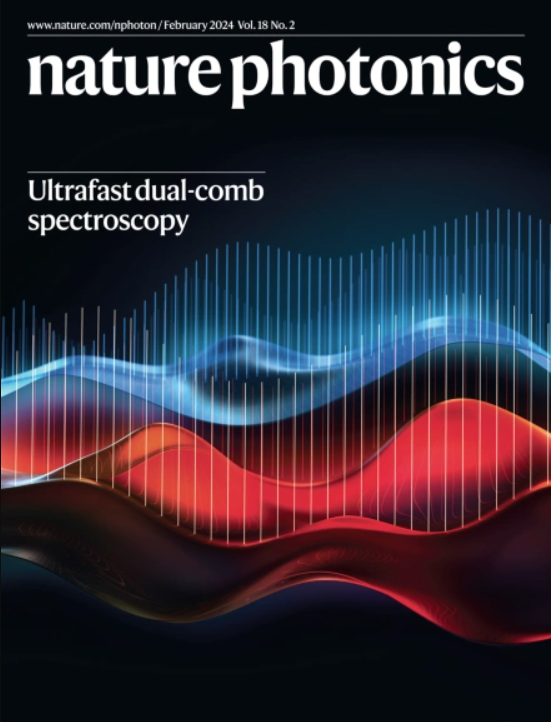用于快速高密度单分子定位显微镜的基于事件的视觉传感器
IF 32.9
1区 物理与天体物理
Q1 OPTICS
引用次数: 0
摘要
单分子定位显微镜(SMLM)能够在单分子水平上揭示细胞结构和过程的关键信息。然而,单分子定位显微镜往往受到有限的时间分辨率和固定帧频采集的阻碍。在此,我们介绍一种基于经济型事件传感器的 SMLM 数据采集和处理新方法。这种传感器对光强变化做出反应,而不是在每帧曝光时间内对光子进行积分。每个像素独立工作,只有在检测到强度变化时才返回信号。与使用传统电子倍增电荷耦合器件或科学互补金属氧化物半导体摄像机进行的视频采集相比,基于事件的传感器可提供更高的时间分辨率和对闪烁分子位置的处理能力。我们展示了基于事件的 SMLM 对生物样本的超分辨率成像,其空间分辨率与电子倍增电荷耦合器件或科学互补金属氧化物半导体照相机的性能相当,同时只记录闪烁分子的开和关开关。我们使用基于事件的 SMLM 来执行非常密集的单分子成像,而基于帧的相机在这方面有很大的局限性。基于事件的传感器可实现超分辨率单分子定位显微镜,其质量和分辨率与传统的科学相机相当,同时还克服了高密度成像的局限性。本文章由计算机程序翻译,如有差异,请以英文原文为准。

Event-based vision sensor for fast and dense single-molecule localization microscopy
Single-molecule localization microscopy (SMLM) enables crucial insights into cellular structures and processes to be revealed at the single-molecule level. However, SMLM is often hampered by limited temporal resolution and the fixed frame rate of the acquisition. Here we present a new approach to SMLM data acquisition and processing based on an affordable event-based sensor. This type of sensor reacts to changes in light intensity, rather than integrating photons during the exposure time of each frame. Each pixel works independently and returns a signal only when an intensity change is detected. Compared with video acquisition using traditional electron-multiplying charge-coupled device or scientific complementary metal–oxide–semiconductor cameras, the event-based sensor provides higher temporal resolution and throughput on the positions of blinking molecules. We demonstrate event-based SMLM super-resolution imaging on biological samples with spatial resolution on a par with the performance of electron-multiplying charge-coupled device or scientific complementary metal–oxide–semiconductor cameras, while registering only the on and off switching of blinking molecules. We use event-based SMLM to perform very dense single-molecule imaging, where frame-based cameras experience major limitations. Event-based sensors enable super-resolution single-molecule localization microscopy with comparable quality and resolution to traditional scientific cameras, while also overcoming the limitations of high-density imaging.
求助全文
通过发布文献求助,成功后即可免费获取论文全文。
去求助
来源期刊

Nature Photonics
物理-光学
CiteScore
54.20
自引率
1.70%
发文量
158
审稿时长
12 months
期刊介绍:
Nature Photonics is a monthly journal dedicated to the scientific study and application of light, known as Photonics. It publishes top-quality, peer-reviewed research across all areas of light generation, manipulation, and detection.
The journal encompasses research into the fundamental properties of light and its interactions with matter, as well as the latest developments in optoelectronic devices and emerging photonics applications. Topics covered include lasers, LEDs, imaging, detectors, optoelectronic devices, quantum optics, biophotonics, optical data storage, spectroscopy, fiber optics, solar energy, displays, terahertz technology, nonlinear optics, plasmonics, nanophotonics, and X-rays.
In addition to research papers and review articles summarizing scientific findings in optoelectronics, Nature Photonics also features News and Views pieces and research highlights. It uniquely includes articles on the business aspects of the industry, such as technology commercialization and market analysis, offering a comprehensive perspective on the field.
 求助内容:
求助内容: 应助结果提醒方式:
应助结果提醒方式:


